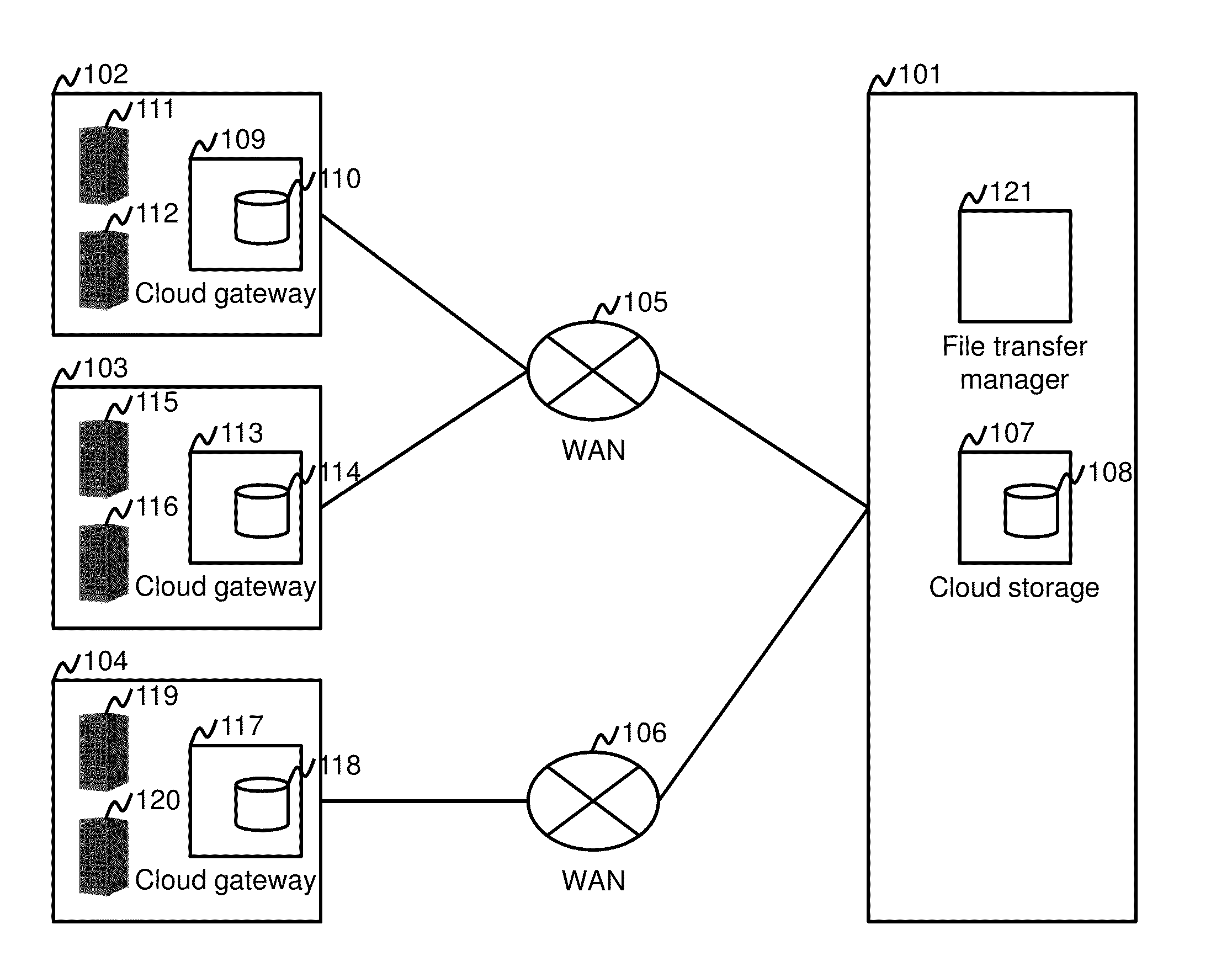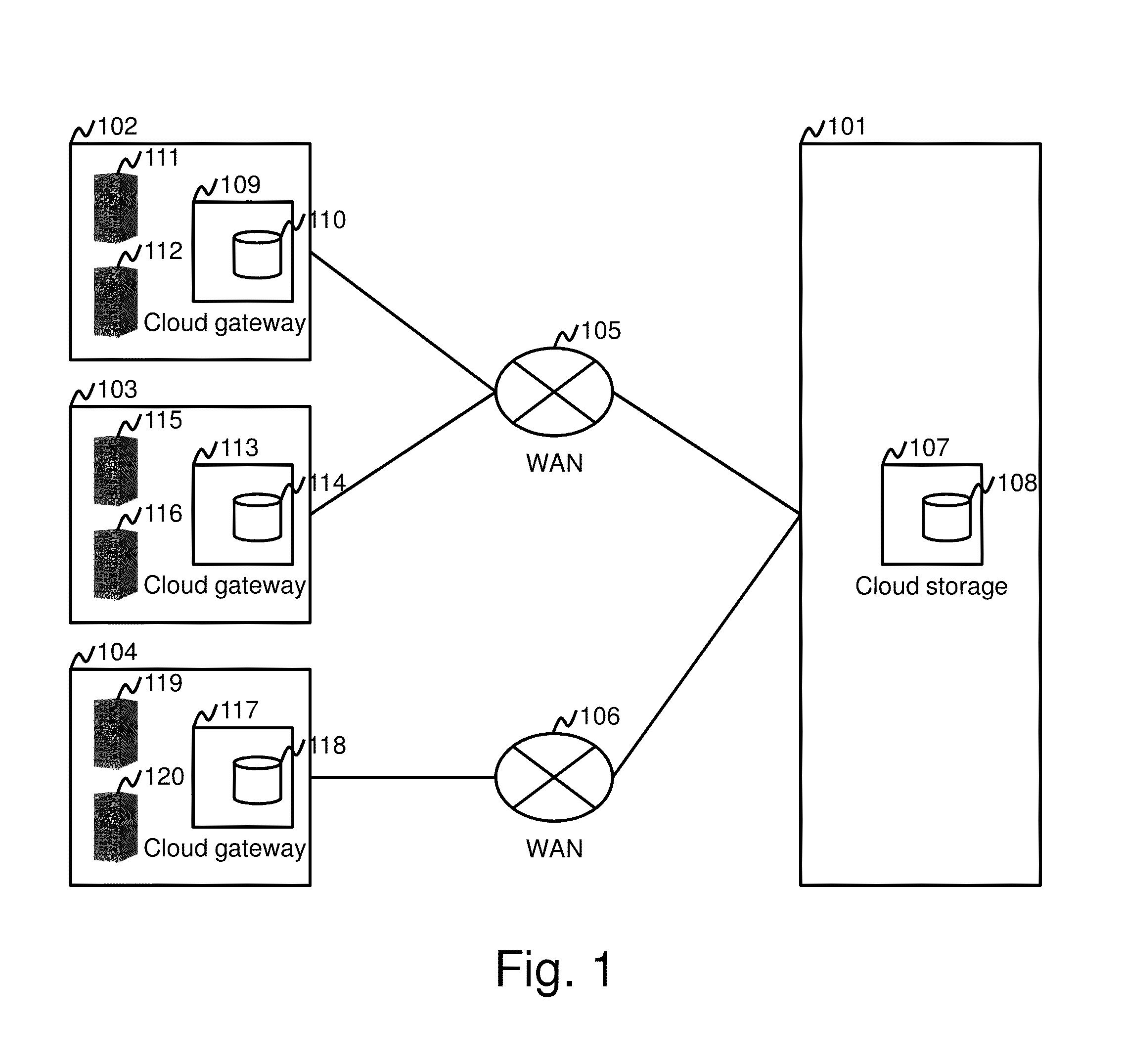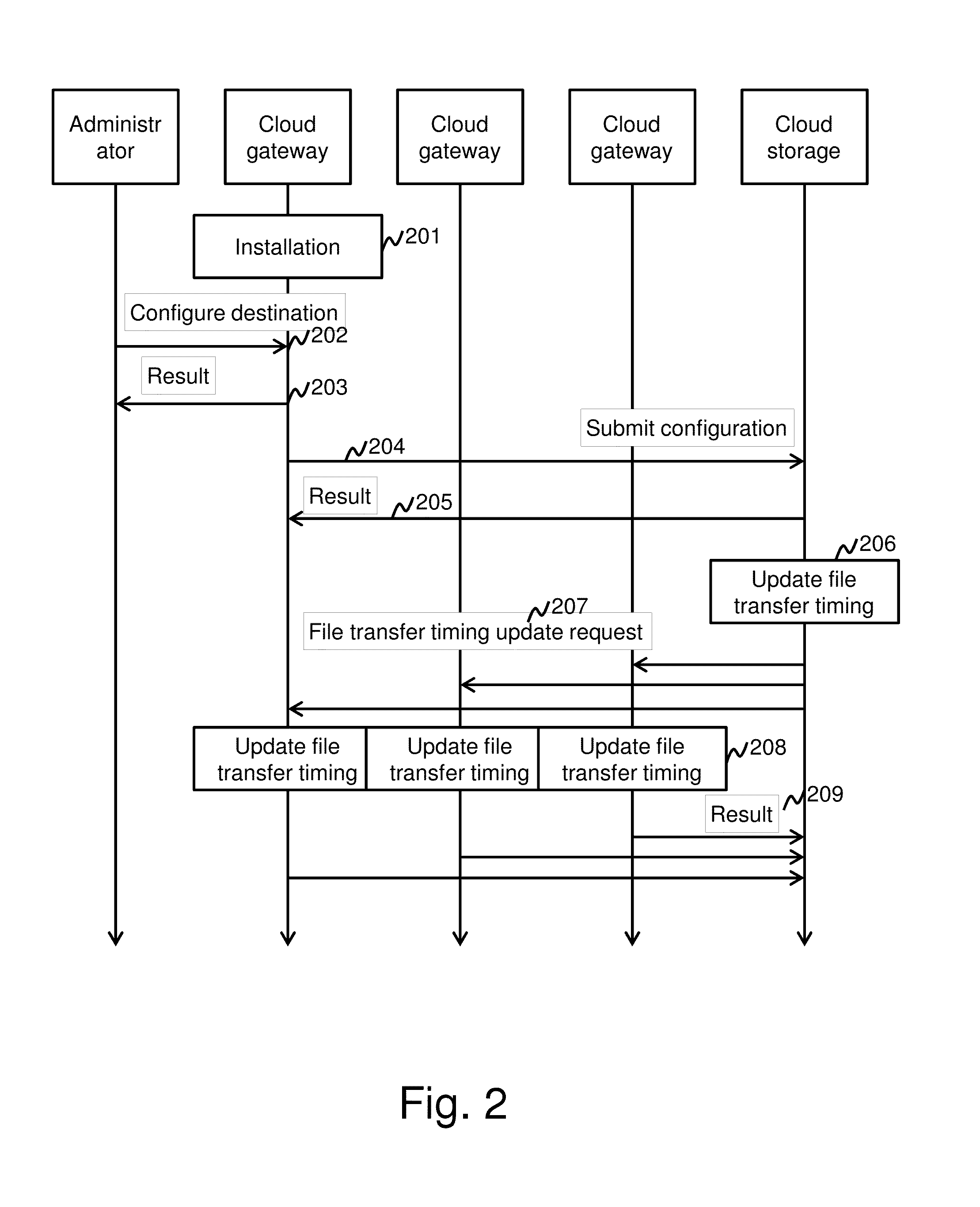Method and apparatus to transfer file data to a cloud environment
a file data and cloud environment technology, applied in the field of storage area network (san) storage systems, can solve the problems of exhausting the processing capacity reducing the throughput of the cloud storage device, and congestion in the network between the cloud gateway and the cloud storage devi
- Summary
- Abstract
- Description
- Claims
- Application Information
AI Technical Summary
Benefits of technology
Problems solved by technology
Method used
Image
Examples
first example implementation
Storage Size Based Time Slot Allocation
[0028]In a first example implementation, a storage system is configured to allocate a time slot for each cloud gateway based on a size of a storage component of each cloud gateway.
[0029]FIG. 1 illustrates an example of a network with a file storage system, in accordance with an example implementation. The system may include a cloud-storage (e.g. storage system) 107, client sites 102, 103, 104 and cloud site 101. The system may also include one or multiple cloud gateways 109, 113, and 117. The cloud-storage and gateways are connected each other by wide-area networks (WANs) 105, and 106. The cloud storage and gateways have internal storage components 108, 110, 114, and 118. User clients 111, 112, 115, 116, 119,120 are located in user sites closer to the cloud gateways 109, 113, and 117.
[0030]FIG. 2 illustrates an example of a message sequence of file storage system, in accordance with an example implementation. After an administrator of the syste...
second example implementation
Access Rate Based Time Slot Allocation
[0055]In a second example implementation, a storage system allocates a time slot for each cloud gateway based on an access rate to the storage component of each cloud gateway.
[0056]FIG. 12 illustrates an example of the flow diagram of the file transfer program 407 in a second example implementation of a file storage system. In a second example implementation, the same network architecture as shown in FIG. 1 and the same hardware and software architecture as shown in FIG. 4 may be utilized, while inheriting the structure of the management information stored in the cloud storage.
[0057]The flow diagram is substantially similar to the first example implementation illustrated in FIG. 11 except with a different method to calculate the priorities of the cloud gateways 109,113, and 117. At the start of this flow diagram (1201), the file transfer program 407 selects the cloud gateway that has the largest write I / O frequency from the cloud gateway I / O sta...
third example implementation
RTT Based Time Slot Allocation
[0058]In a third example implementation, a storage system allocates a time slot for each cloud gateway based on a round-trip time (RTT) between the cloud-storage device and each cloud gateway.
[0059]FIG. 13 illustrates an example of a message sequence in a third example implementation of a file storage system. In a third example implementation, the cloud storage 107 controls file transfer timing according to a RTT between the cloud storage 107 and a cloud gateway 109, 113, or 117. The third example implementation also utilizes the same network architecture shown in the FIG. 1 and the same hardware and software architecture as shown in FIG. 4, while also inheriting the structure of the management information stored in the cloud storage.
[0060]In the message sequence of FIG. 13, after the installation of a cloud gateway 117 (1301), an administrator of the system configures the destination of file transfer by the installed cloud gateway (1302), and receives ...
PUM
 Login to View More
Login to View More Abstract
Description
Claims
Application Information
 Login to View More
Login to View More - R&D
- Intellectual Property
- Life Sciences
- Materials
- Tech Scout
- Unparalleled Data Quality
- Higher Quality Content
- 60% Fewer Hallucinations
Browse by: Latest US Patents, China's latest patents, Technical Efficacy Thesaurus, Application Domain, Technology Topic, Popular Technical Reports.
© 2025 PatSnap. All rights reserved.Legal|Privacy policy|Modern Slavery Act Transparency Statement|Sitemap|About US| Contact US: help@patsnap.com



